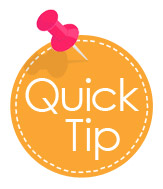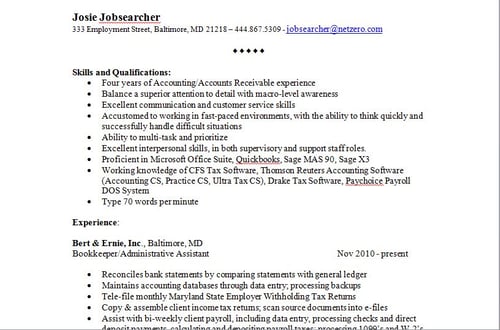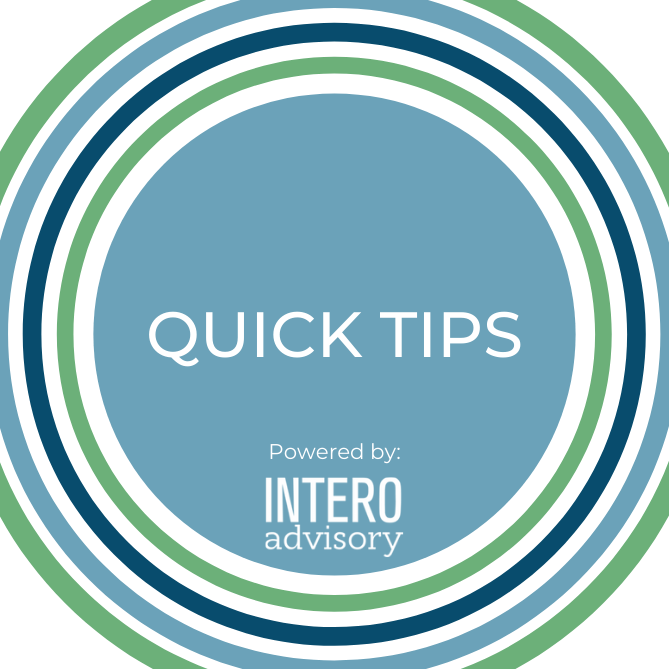 I read resumes every day. (Some of you probably just felt shivers run down your spine when you read that line). For some, resume review is a task worse than a trip to the dentist. I, personally, enjoy it! I like to see people’s background. I like to piece together what they’ve done with what they could do and what a particular job description is asking of them. As I’ve mentioned before, recruiting is a lot like doing a puzzle.
I read resumes every day. (Some of you probably just felt shivers run down your spine when you read that line). For some, resume review is a task worse than a trip to the dentist. I, personally, enjoy it! I like to see people’s background. I like to piece together what they’ve done with what they could do and what a particular job description is asking of them. As I’ve mentioned before, recruiting is a lot like doing a puzzle.
But like doing a puzzle, it’s important to have a clear, unobstructed view. This is where the subject of formatting comes in to play. You can have all of the best experience at all of the best companies in the world, but if you have a poorly formatted resume there is a strong chance that it’s not going to make it into the hands of the person who needs to see it.
So, I have three quick tips for you on how to simplify your resume format and build its effectiveness instantly.
Down with the Resume Objective!
Can we please stop including this ultra-traditional, totally redundant and haltingly awkward line at the top of our resumes? Please? I don’t know who invented the resume objective and then travelled the land, evangelizing its merits, but that person’s opinion is no longer relevant.
It’s one of the very first things that employers and recruiters see when they open up that attachment. Is that really what you want them to see first? An unremarkable comment stating your obvious intention of wanting this job? You can do better than that.
So, let’s talk about what you should lead with…
I want to see your skills first
Including a set of skills and qualifications first thing, front and center, is such an excellent way to a) highlight your abilities and b) make someone who is reading resume after resume so very happy with you. Take a look at the resume below. See how clean and to-the-point it is?
Think about where your strengths lie. Write them down. Then take a look at the job description. Where does your list of strengths intersect with the job description? List those skills first. Make it simple and intuitive for the resume reader. Remember, it’s a puzzle. Not a scavenger hunt.
Keep it under 2 pages
Too often I see too-long resumes. It’s not that I’m not interested in all of that information. It’s just that I don’t need to know it all at the first look. You want the person reading your resume to be curious about you. And you don’t want them to be bored!
Job experience that you acquired more than 10 years ago is not necessarily going to be relevant anymore. Listing every detail of what you’ve done in a particular position doesn’t serve the application process. You have to hone your skills for knowing what to keep and what to leave for later. Many times this, once again, involves reading the job description, finding where your current responsibilities intersect with the new job’s responsibilities and prioritizing those items. From there, you can filter out secondary responsibilities or ones that do not relate to the job you are applying for.
Other tips for shortening your resume are:
- You can omit experience beyond 7-10 years. That information can be covered during the screening or interview.
- You can omit your physical address. In such a digital world, including your home address is nowhere near as important as including your email address.
- A simple “References available upon request” line at the bottom of your email will suffice. No need to list out your references when submitting a resume.
Remember, the key is to make an impact. It’s a balancing act between including the information that you want someone to see, the work experience that they need to see and keeping it at a length that will leave them wanting to know more.
Happy job hunting and/or resume reading everyone!




